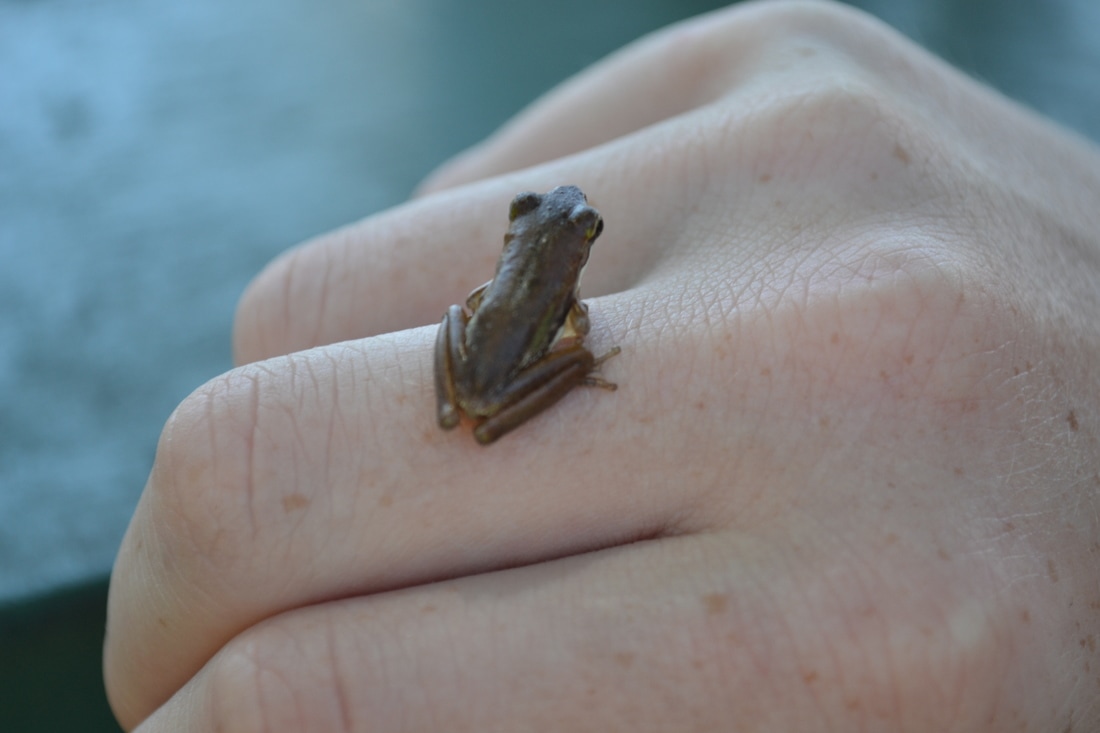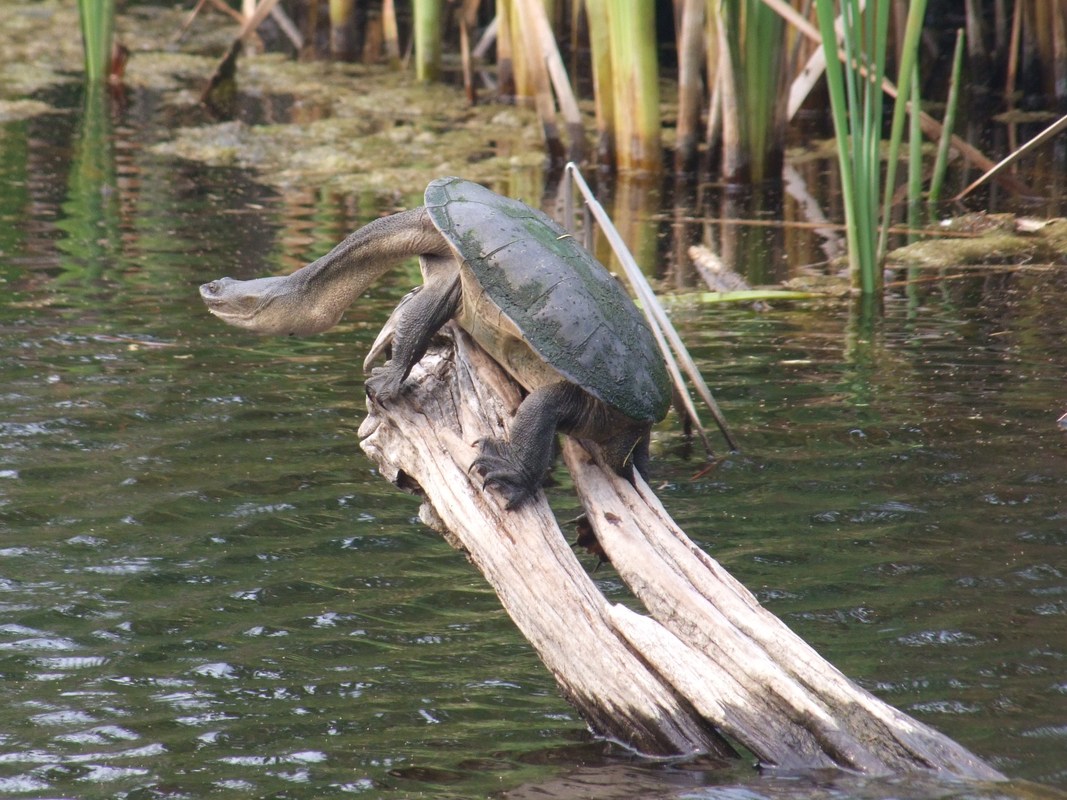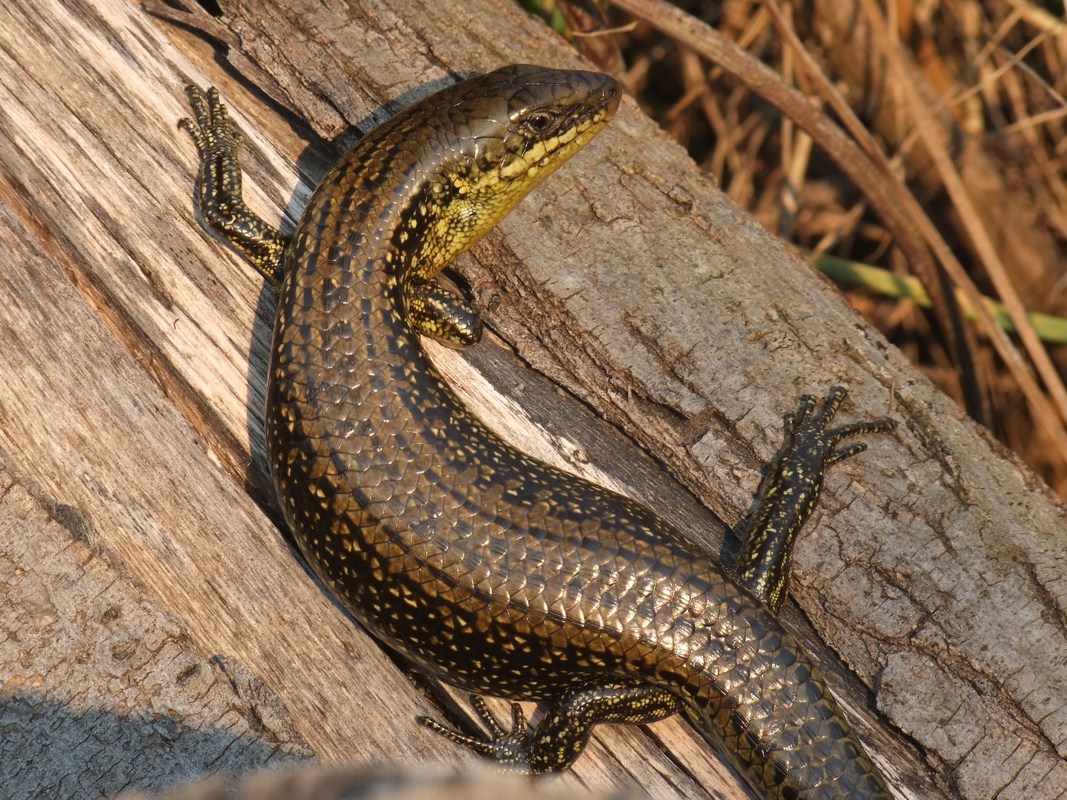Insects
As you might expect, a broard array of insects also call Big Swamp home. For your interest, please use the following link to access a wonderful website (The Insect Diary) about insects in the South West with information and photographs. This amazing record has been created courtesy of a local community member and FOBS volunteer, Dr Sunayana RamMohan.
https://theinsectdiary.blogspot.com.au/
https://theinsectdiary.blogspot.com.au/
Long Neck Turtle
|
Between September and January, female Long-necked Turtles leave the water to search for suitable sandy soil to lay their first eggs. She digs a hole with her webbed back feet, perfect for swimming and digging. She lays between 2 - 16 leathery eggs then covers them with soil, pats it flat with her body and returns to the water.
The eggs are untended and rely on weather and temperature for incubation, between 26 - 41 weeks - a long time to be defenceless. Once hatched the miniature turtles instinctively head straight for the water. Even though the Big Swamp Lake appears to dry out at the end of summer the Long-necked Turtle will survive. They do this by burrowing into the mud underneath submerged logs and decaying vegetation, then controlling their body temperature in a semi-hibernation state (aestivation). Enough other aquatic creatures in the food chain will have also survived so the Turtles remain in good condition. Major threats to survival of the Long-necked Turtle are foxes, dogs, cats, road traffic preventing easy reach to nesting sites, water drainage or salination of lakes. The species of turtle we have in WA is not the same as the East coast turtle. This was finally agreed upon in 2013 and is expected to soon be officially named "Chelodina Colliei”. The species is on the "near threatened' list so Big Swamp is providing a freshwater wetland where with care and protection it can flourish. Occasionally during the summer, you may spot a turtle sprawled across a half-submerged log enjoying the sunshine. |
ReptilesReptiles such as lizards and snakes also live at Big Swamp. As venomous snakes such as Tiger Snakes and Dugites may be found in the habitat, it is important to use the paths and boardwalks when visiting Big Swamp, keep dogs on a leash, and to take extra care during the seasons when snakes are their most active.
|



